What does TONER LOW mean on my Brother Laser printer?
- EellisonelizabethAug 31, 2025
If your Brother Laser printer displays 'TONER LOW', buy a new toner cartridge and have it ready for when the REPLACE TONER status is indicated.
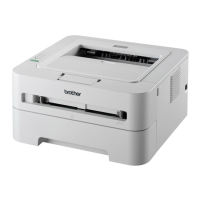
What does TONER LOW mean on my Brother Laser printer?
If your Brother Laser printer displays 'TONER LOW', buy a new toner cartridge and have it ready for when the REPLACE TONER status is indicated.
What does FUSER ERROR mean on my Brother Laser printer?
If the 'FUSER ERROR' message appears on your computer for your Brother Laser printer, turn the machine's power off, wait a few seconds, and then turn it on again. Leave the machine for 15 minutes with the power on.
What to do if my Brother Laser printer says NO TONER?
If your Brother Laser printer displays 'NO TONER', open the front cover, then install the toner cartridge.
Why is my Brother Laser printer not feeding paper from the manual feed slot?
If your Brother Laser printer is not feeding paper from the manual feed slot, put only one sheet of paper in the manual feed slot. Also, make sure that you have chosen Manual in Paper Source of the printer driver.
What does SIZE ERROR DX 1 mean on my Brother Laser printer?
If your Brother Laser printer shows 'SIZE ERROR DX 1', choose a paper size which is supported by the duplex tray.
Why can't my Brother Laser printer print full pages with MEMORY FULL error?
If your Brother Laser printer cannot print full pages and displays a 'MEMORY FULL' error, press Go to print the remaining data in the machine's memory. Alternatively, cancel the print job to delete the remaining data in the machine memory. You can also reduce the complexity of your document or reduce the print resolution.
Why is the paper curling when printed from my Brother HL-2135W?
If the paper is curling after being printed by your Brother printer, the fuser unit might be failing and require replacement.
What to do if my Brother HL-2135W does not feed paper from the manual feed slot?
If your Brother printer isn't feeding paper from the manual feed slot, try these solutions: * Check the harness connection of the registration front/rear sensor PCB ASSY and reconnect it if necessary. * The low voltage power supply PCB ASSY or the main PCB might be faulty and need replacement. * If the registration front/rear sensor is failing, check the sensor performance. If any problem occurs, replace the regist frame ASSY.
What to do if there is a paper jam at the paper tray and front cover section of my Brother HL-2135W?
If you're experiencing paper jams at the paper tray and front cover section of your Brother printer, consider the following: * Ensure that the paper edge actuator (on HL-2250DN/2270DW/2275DW models) or the registration front actuator isn't catching. Correct their positioning if needed. * Check and reconnect the harness connection of the registration front/rear sensor PCB ASSY if it's loose. * If the paper feeding roller is worn out, replace the paper feeding kit. * The low voltage power supply PCB ASSY or the main PCB might be faulty, requiring replacement. * Check the registration front and rear sensor performance. If any problem occurs, replace the regist frame ASSY.
What to do if my Brother HL-2135W Printer is not feeding paper?
If your Brother printer isn't feeding paper, there are several possible causes and solutions: * The lift arm and pick-up roller holder assembly may not be assembled correctly. In this case, re-assemble the lift arm and pick-up roller holder assembly. * Check the harness connections of the T1 clutch ASSY and the paper edge sensor harness ASSY, and reconnect them if necessary. * The paper feeding roller or the plate-up gear might be faulty, in this case replace the paper feeding kit or the plate-up gear. * The T1 clutch ASSY, panel PCB ASSY, or main PCB might have failed, requiring replacement. * For HL-2250DN/2270DW/2275DW models, check the paper edge sensor performance. If there are any issues, replace the PF frame ASSY.
| Color | No |
|---|---|
| Print technology | Laser |
| Maximum resolution | 2400 x 600 DPI |
| Economical printing | Yes |
| Time to first page (black, normal) | 10 s |
| Print speed (black, normal quality, A4/US Letter) | 20 ppm |
| Wi-Fi standards | 802.11b, 802.11g |
| Security algorithms | 128-bit WEP, 64-bit WEP, WPA-AES, WPA-PSK, WPA-TKIP, WPA2-PSK |
| Printing colors | Black |
| Maximum duty cycle | - pages per month |
| Recommended duty cycle | 250 - 1600 pages per month |
| Number of print cartridges | 1 |
| Maximum internal memory | - MB |
| Sound power level (standby) | 31 dB |
| Sound pressure level (printing) | 53 dB |
| Total input capacity | 250 sheets |
| Total output capacity | 100 sheets |
| Custom media width | 76.2 - 216 mm |
| Maximum print size | 216 x 356 mm |
| Custom media length | 116 - 406 mm |
| Paper tray media types | Plain paper |
| Paper tray media weight | 60 - 105 g/m² |
| ISO A-series sizes (A0...A9) | A4, A5, A6 |
| ISO B-series sizes (B0...B9) | B5, B6 |
| Maximum ISO A-series paper size | A4 |
| Multi-Purpose Tray media weight | 60 - 163 g/m² |
| Standard interfaces | USB 2.0, Wireless LAN |
| USB 2.0 ports quantity | USB 2.0 ports have a data transmission speed of 480 Mbps, and are backwards compatible with USB 1.1 ports. You can connect all kinds of peripheral devices to them. |
| Mac operating systems supported | Mac OS X 10.4 Tiger, Mac OS X 10.5 Leopard, Mac OS X 10.6 Snow Leopard, Mac OS X 10.7 Lion |
| Server operating systems supported | Windows Server 2003, Windows Server 2003 x64, Windows Server 2008, Windows Server 2008 R2, Windows Server 2008 x64 |
| Windows operating systems supported | Windows 2000, Windows 2000 Professional, Windows 7 Home Premium, Windows 7 Home Premium x64, Windows 7 Professional, Windows 7 Professional x64, Windows 7 Starter, Windows 7 Starter x64, Windows 7 Ultimate, Windows 7 Ultimate x64, Windows Vista Business, Windows Vista Business x64, Windows Vista Home Basic, Windows Vista Home Basic x64, Windows Vista Home Premium, Windows Vista Home Premium x64, Windows Vista Ultimate, Windows Vista Ultimate x64, Windows XP Home, Windows XP Home x64, Windows XP Professional, Windows XP Professional x64 |
| AC input voltage | 220 - 240 V |
| AC input frequency | 50 - 60 Hz |
| Power consumption (off) | 0.9 W |
| Power consumption (standby) | 62 W |
| Power consumption (printing) | 421 W |
| Package weight | 8000 g |
| Sustainability certificates | ENERGY STAR |
| Product color | White |
| Dimensions (WxDxH) | 368 x 360 x 183 mm |
|---|
Explains the meaning of symbols used throughout the documentation.
Provides an overview and front/back views of the printer.
Details types of paper and media suitable for the printer.
Specifies paper types, sizes, and tray compatibility.
Provides guidelines for using special paper types like labels and envelopes.
Shows the margins that cannot be printed on for various paper sizes.
Instructions for printing on common paper types from the paper tray.
Guidance on printing custom media like labels and envelopes.
Explains how to perform two-sided printing.
Details automatic duplex printing for specific models.
Instructions for manual two-sided printing.
Information about installing and using the printer driver software.
Explains various settings available in the Windows printer driver.
Explains various settings available in the Macintosh printer driver.
Steps to remove the printer driver from your computer.
Information about network utility software and remote console.
Explains the meaning of the printer's status LEDs.
Describes LED patterns indicating service is required.
Details the various functions of the Go button.
How to print a test page to check printer status.
How to print the current printer configuration settings.
Instructions for resetting network or factory default settings.
Information on replacing toner and drum units.
Details about the toner cartridge and replacement procedure.
Information about the drum unit and replacement.
General instructions for cleaning the printer.
Steps to clean the paper pick-up rollers.
Instructions for safely packing the printer for transport.
Guide to identifying common printer issues.
Explains error messages reported by the Status Monitor.
Addresses issues related to paper feeding and handling.
Step-by-step guide to clearing paper jams.
Solutions for common print quality problems.
Tips for resolving unexpected printing behavior or garbage data.
Troubleshooting network connectivity issues for specific models.
Specific troubleshooting for Macintosh users with USB connections.
Technical specifications for the printer's engine.
Technical specifications for the printer's controller.
Details about printer driver and utility software compatibility.
Summary of paper input, output, and duplex capabilities.
Information on supported media types, weights, and sizes.
Details on toner cartridges and drum units, including model numbers.
Physical dimensions and weight of the printer.
Lists the required computer hardware and operating systems.
Guidance on selecting the right paper for optimal print quality.
Reference for using bar code control commands for specific models.
Instructions for registering the printer with Brother.
Information on accessing Brother's online support resources.
Contact information for Brother support and service centers in Europe.
Instructions for registering the printer with Brother.
Information on accessing Brother's online support resources.
Contact details for Brother support and online resources for USA/Canada.
Information on purchasing toner cartridges and drum units.
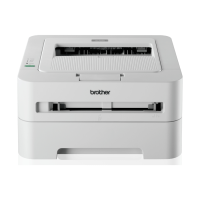
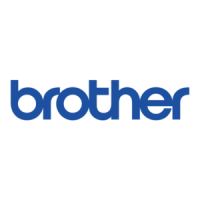



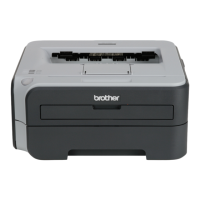
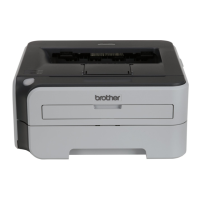
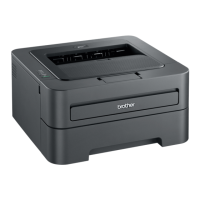
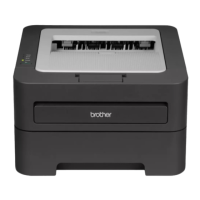



